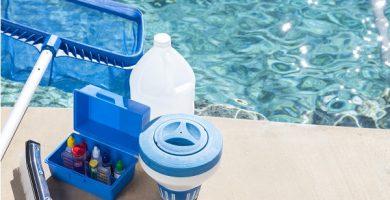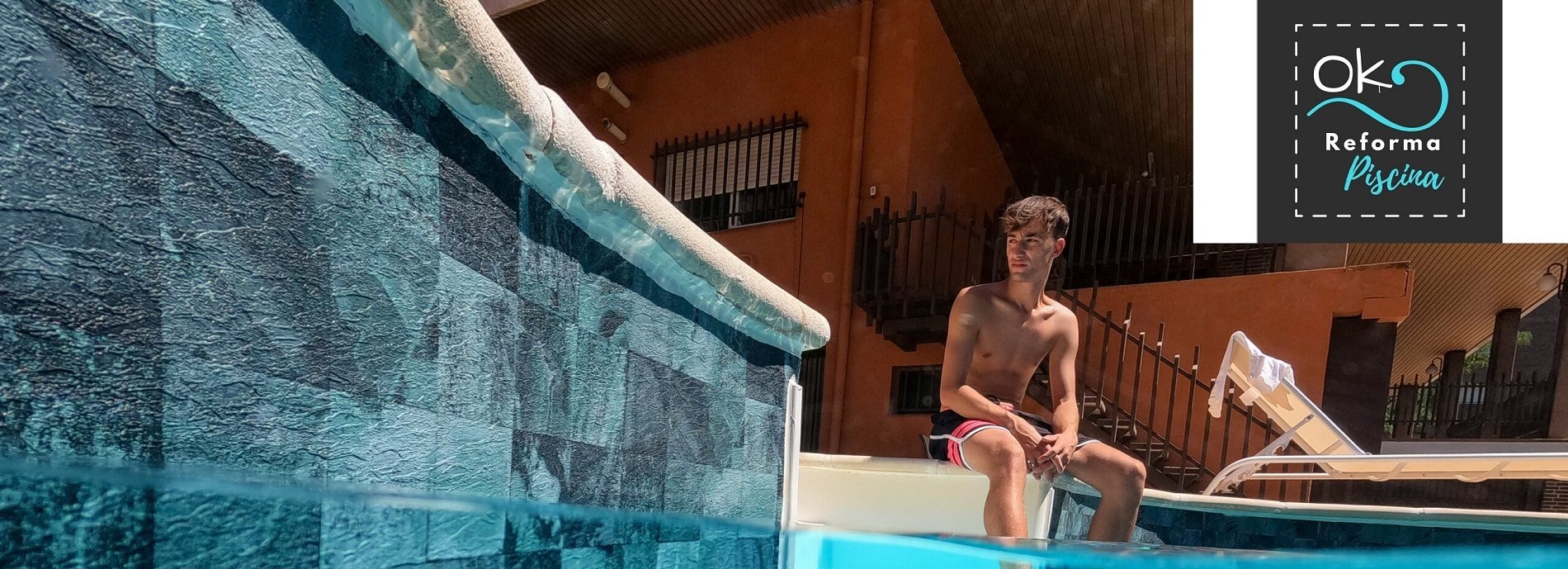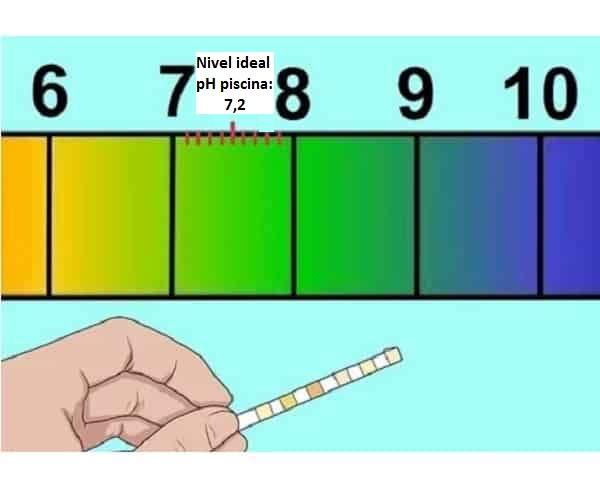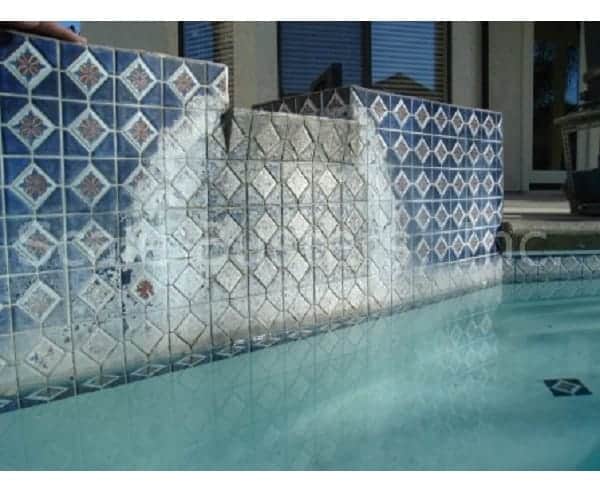
Table of contents of the page
En Ok Pool Reform and within the Pool Maintenance Guide We will talk to you about: White dust in the pool – What is it and how to remove it?
What is white dust in the pool and what causes it?
White dust in the pool is a common problem.
1st cause: Misalignment of the pH of the pool water
Whitish dust in the swimming pool is a common phenomenon. It occurs when the pH level of the pool water is too high or too low.
- On the one hand, pools with a lower pH level have a higher concentration of calcium carbonate, which leads to the formation of calcium carbonate particles. This dust can be found on surfaces and objects in and around the pool, such as tiles, floors, and even on people's clothing.
- Moreover, pools with a high pH level have a higher concentration of bicarbonates and chlorides, which causes an increase in sodium chloride particles. These particles are what cause white dust to form on surfaces around pools with high pH levels.
2nd Cause of whitish dust in the pool: presence of algae
White dust in the pool is usually microscopic algae that has accumulated in the water.

Is the salt pool exempt from having green water?

What to do when I have cloudy water in the pool?

Do not ignore the green pool water, put a solution, now!
White dust in the pool is caused by a type of algae called Cladophora.
- To start, comment that Cladophora is a type of algae that thrives in warm, stagnant water. It can grow quickly and cover the surface of the pool. This makes it difficult for swimmers to see and causes an unpleasant odor.
- Additionally, it can be found in any pool, but is more common in pools with poor circulation or low chlorine levels that are not treated regularly.
- Algae are plants that need chlorine to thrive, so if there is an insufficient amount of chlorine in the water, algae will begin to grow. The problem is that when algae builds up, it can make the water look cloudy and opaque. They may also stain their clothes or shave their legs.
- Finally, comment that the first action to take if this is the cause is to increase the amount of chlorine in the water since it will kill the algae and prevent them from growing again.
The 3rd most common consequence of white dust in the pool is calcium or magnesium
These minerals occur naturally in water, but if there is too much of them, they can come out of the water and form a white coating on objects.
- Basically, the problem with calcium and magnesium is that they can clog pipes and other pool systems, which can cause serious damage.
- White dust in your pool is caused by the buildup of calcium deposits that occur when water evaporates from your pool. This buildup can also cause other problems, such as algae growth and staining of pool surfaces.
Air bubbles
- When air bubbles burst in the pool, they release a white powder that is made of small pieces of calcium carbonate. This is also known as “dead skin.”
- This white powder is made up of tiny pieces of calcium carbonate, which are also known as "dead skin." When air bubbles burst in the pool, they release this white powder.
Remove white dust from the pool when the cause is calcium or magnesium
It is important to remove these deposits as soon as possible so that they do not cause damage to your pool. Here are some steps you can take to get rid of them:
- If the problem is calcium or magnesium, a chemical can be used to dissolve the minerals.
- You can also filter the water to remove minerals.
- Fill a bucket with water from your pool and pour it over the affected areas of the pool.
- Scrub the affected areas with a brush until the calcium deposits have been completely removed.
How to remove white dust from the pool if the dust problem caused by calcium is severe:
- Empty the water from the pool and go back to fill it with fresh water and check if there are more calcium deposits that need to be removed.
- So, to clean this type of white dust from your pool, you will have to empty the pool or at least drain it until there is no more water left inside. Once you have drained all the water, use a brush to scrub away any calcium deposits that may be stuck to the pool walls. You can also try adding an algaecide or clarifying product if you have an algae problem that needs to be treated, as well as cleaning calcium deposits on the walls after draining all the water from the pool if this occurs quite frequently then
- Lastly, if the problem persists, you may need to call a professional to help you resolve it.
How can you remove trash and dust from the pool?
Video removing white dust from the pool
Next in this video, you will be able to learn how the return nozzles work and how to clean the impurities suspended above the pool water.
4th Cause of whitish dust in the pool: Eflorescence
Efflorescence occurs when moisture reacts with minerals such as calcium or sodium in concrete or other building materials.

Useful guide to know how to clean the pool

Types of pool covers with their advantages

What is pool filtration: main elements and operation
The main difference between efflorescence and pool calcium dust is that efflorescence cannot be cured by adding calcium, but only by removing moisture.
Pool owners should take steps to reduce humidity in their pools.
Remove white dust from the pool
- One way to do this is by using a pool cover. It is important to use a cover that is large enough and designed for the size of the pool. The cover should be worn during the day and removed at night when it cools down.
- The next step would be to clean the debris from the bottom of the pool with a vacuum cleaner or skimmer net. If there are leaves on top of the water, they should also be removed. Any leaves left in the water will decompose and release more moisture into the air, increasing the humidity levels in your pool.
- Lastly, you should drain your pool filtration system regularly and replace the filtration cartridge every week or two, depending on how often you use your filtration system. This will prevent any excess moisture from entering the pool's circulation system and will also help keep humidity levels low inside the pool.
If you are still having trouble getting rid of this white powder after using these methods, you may have a problem with your system of fifiltered and must replace it with a new one.



